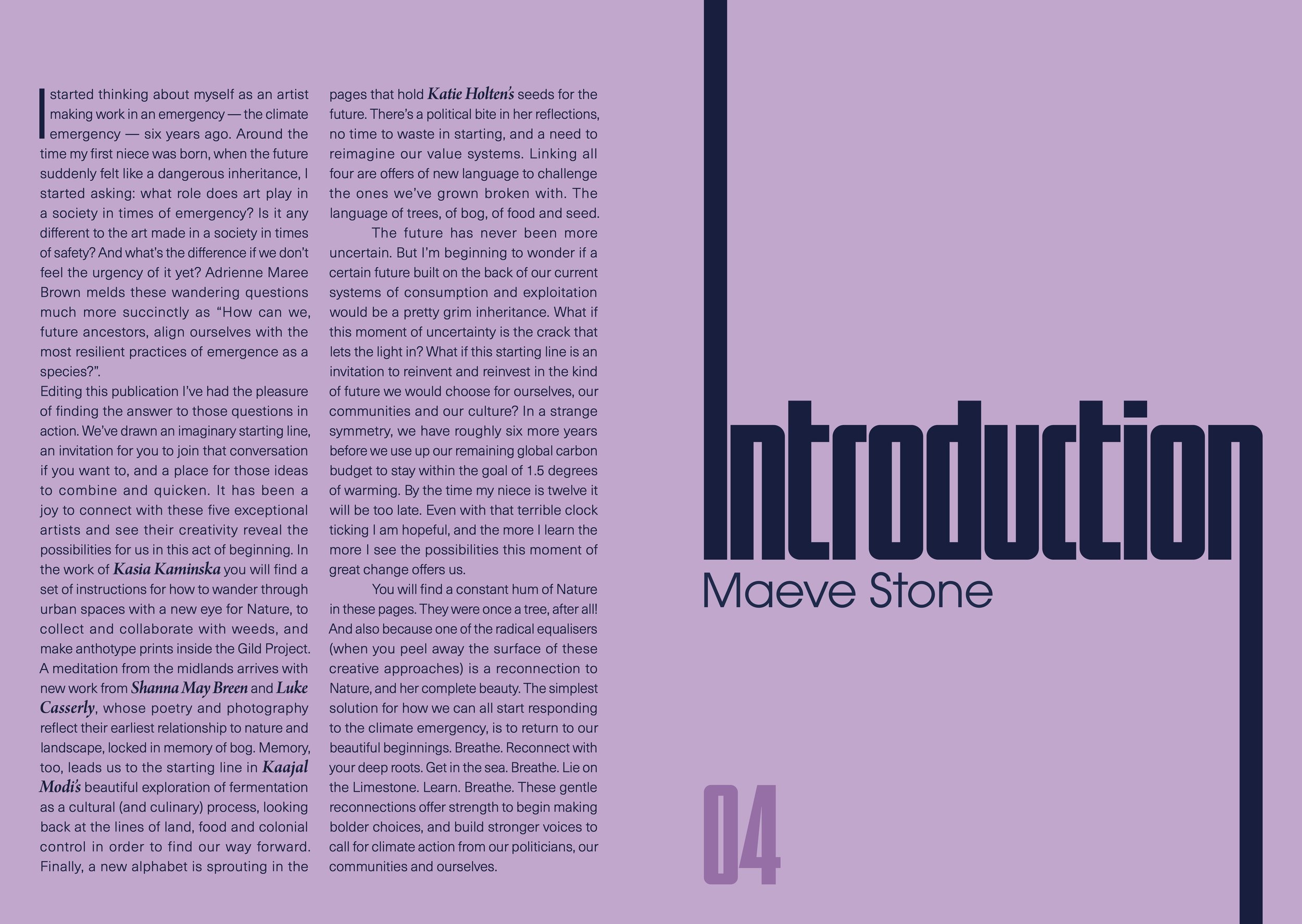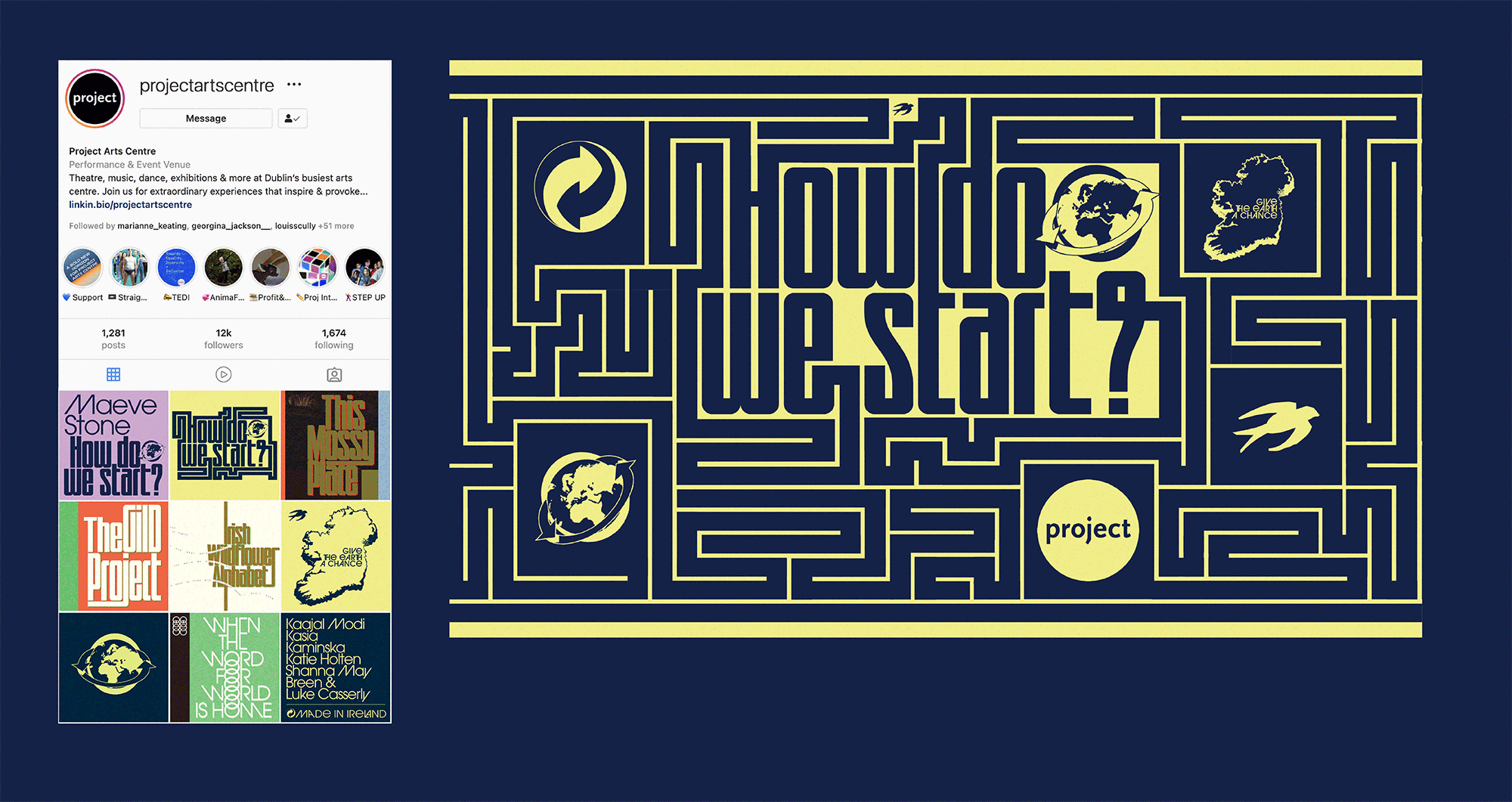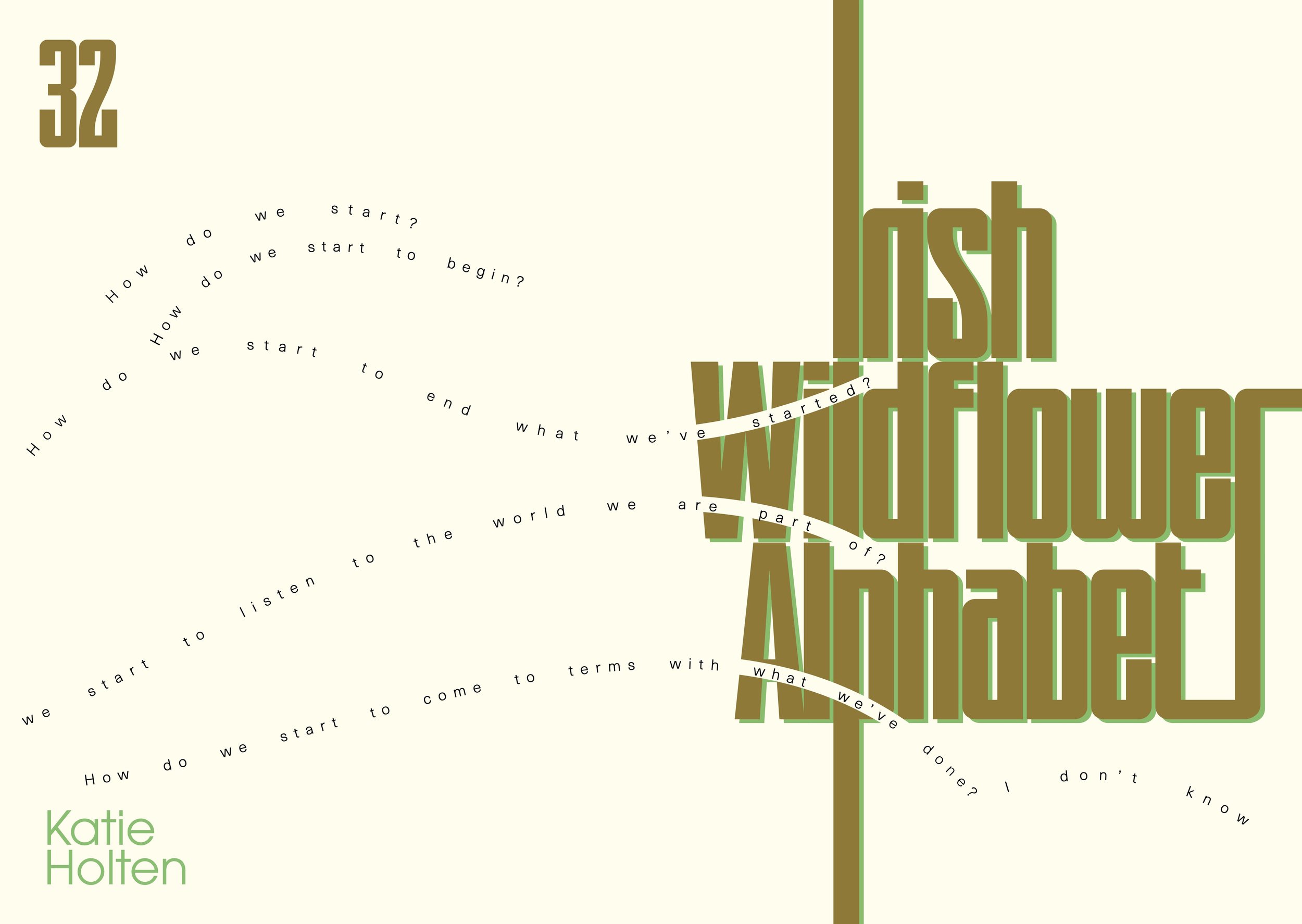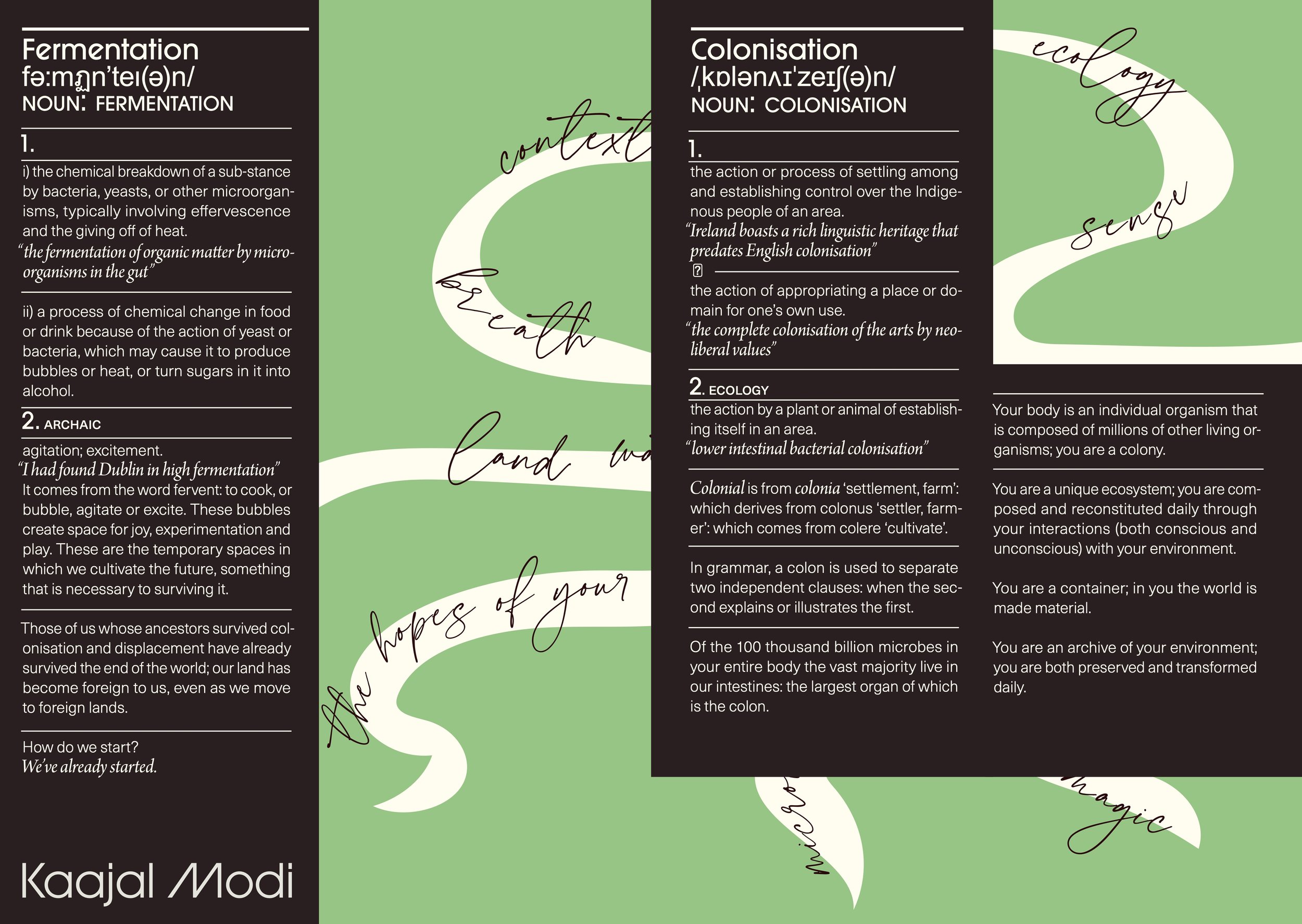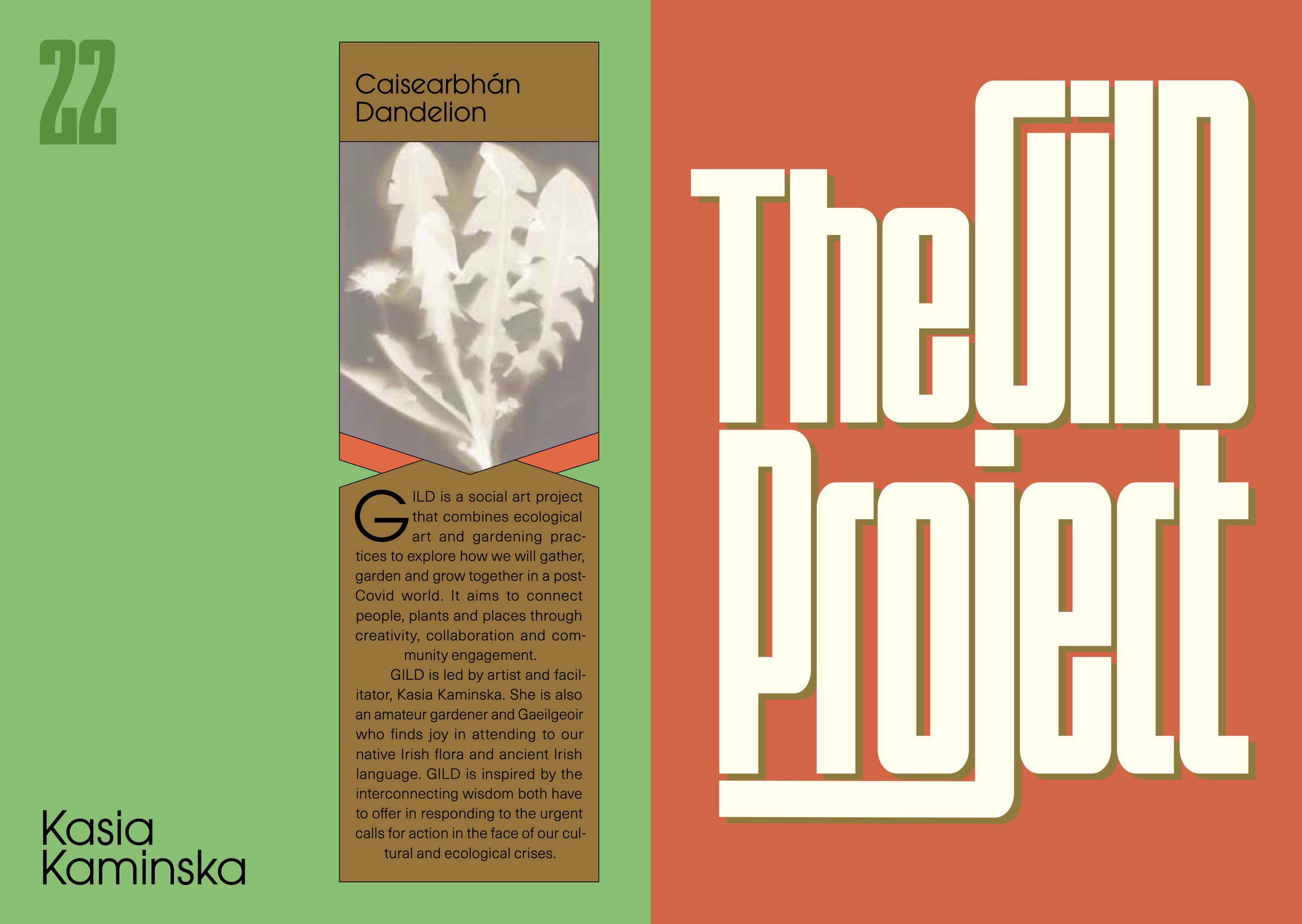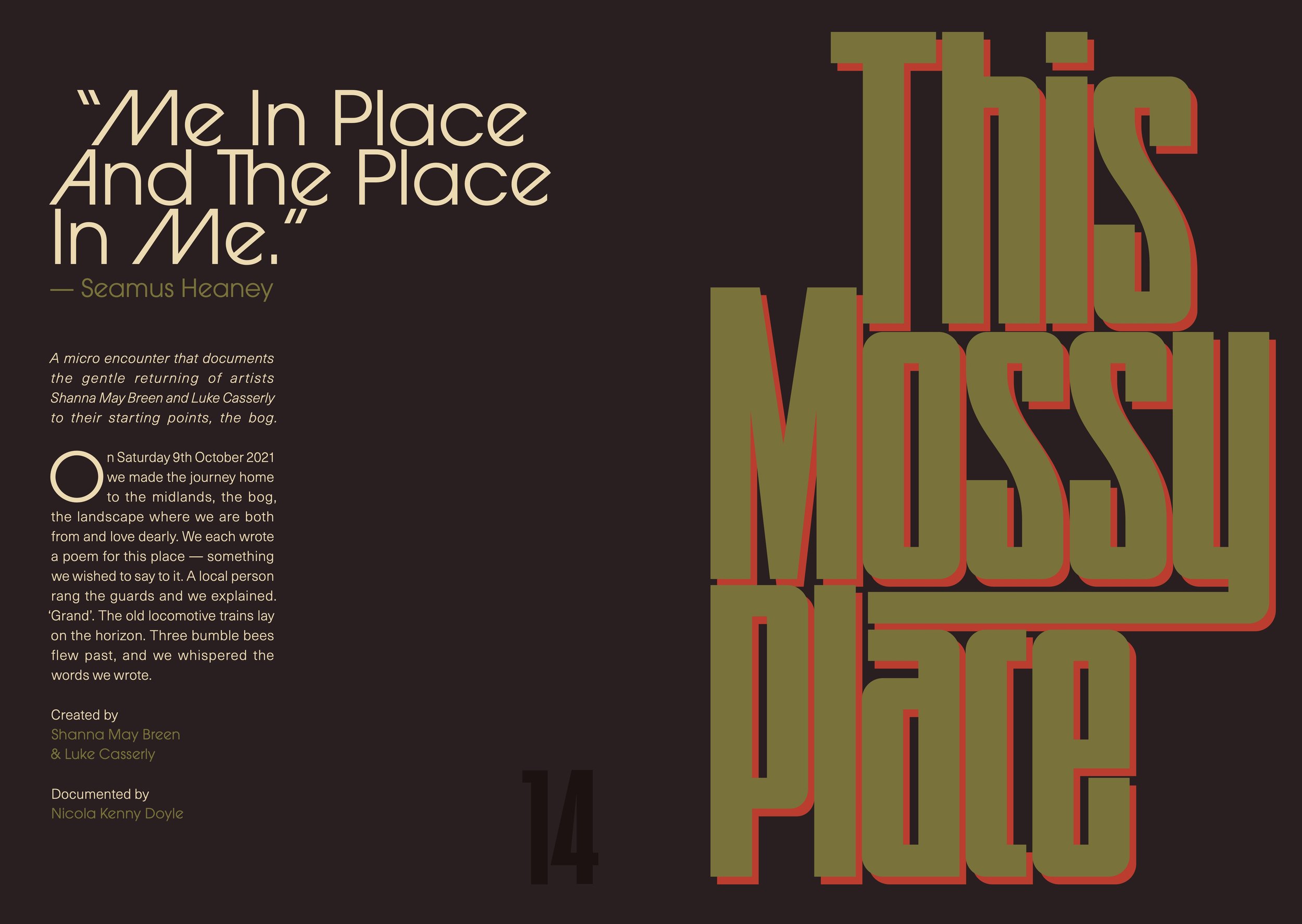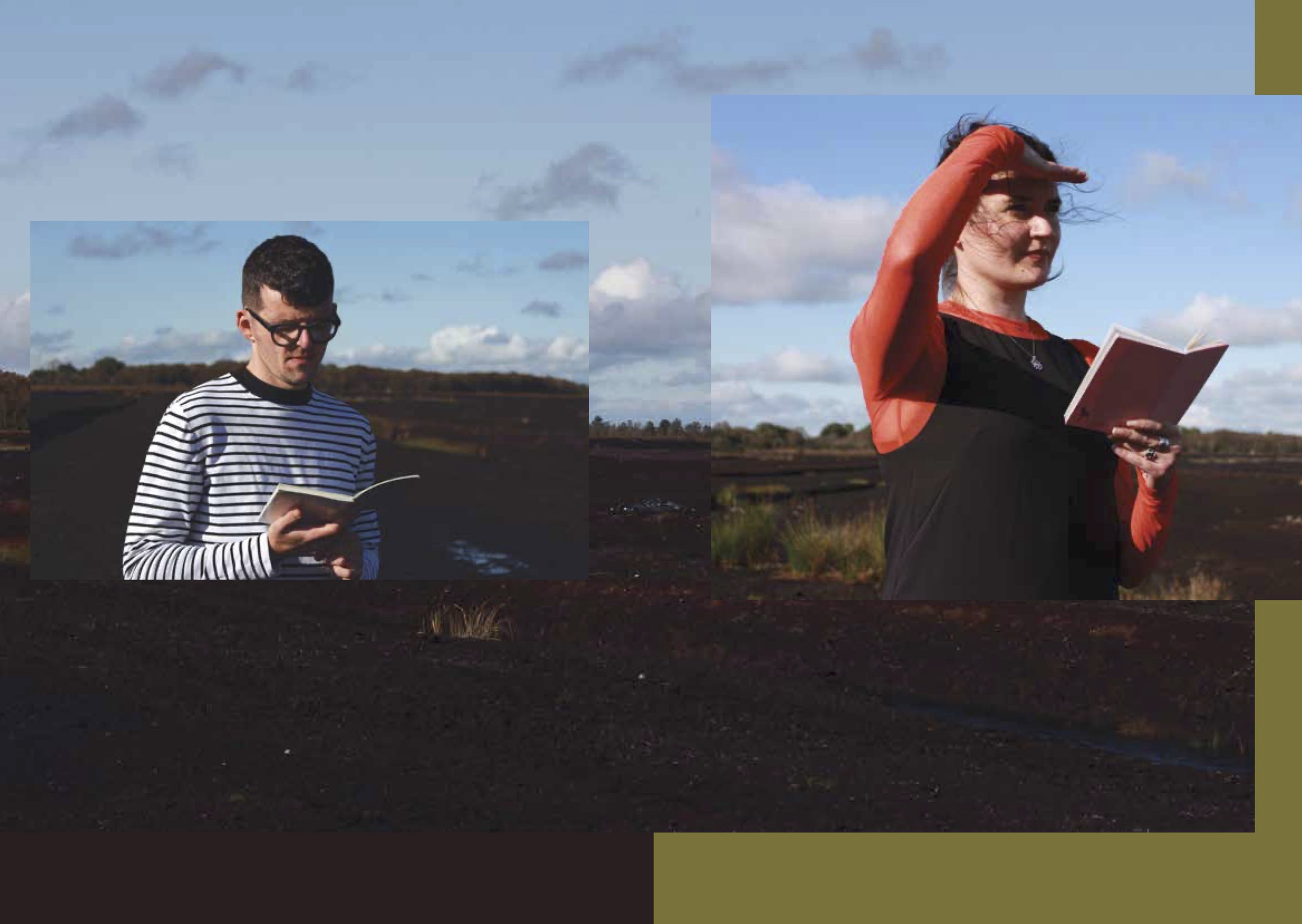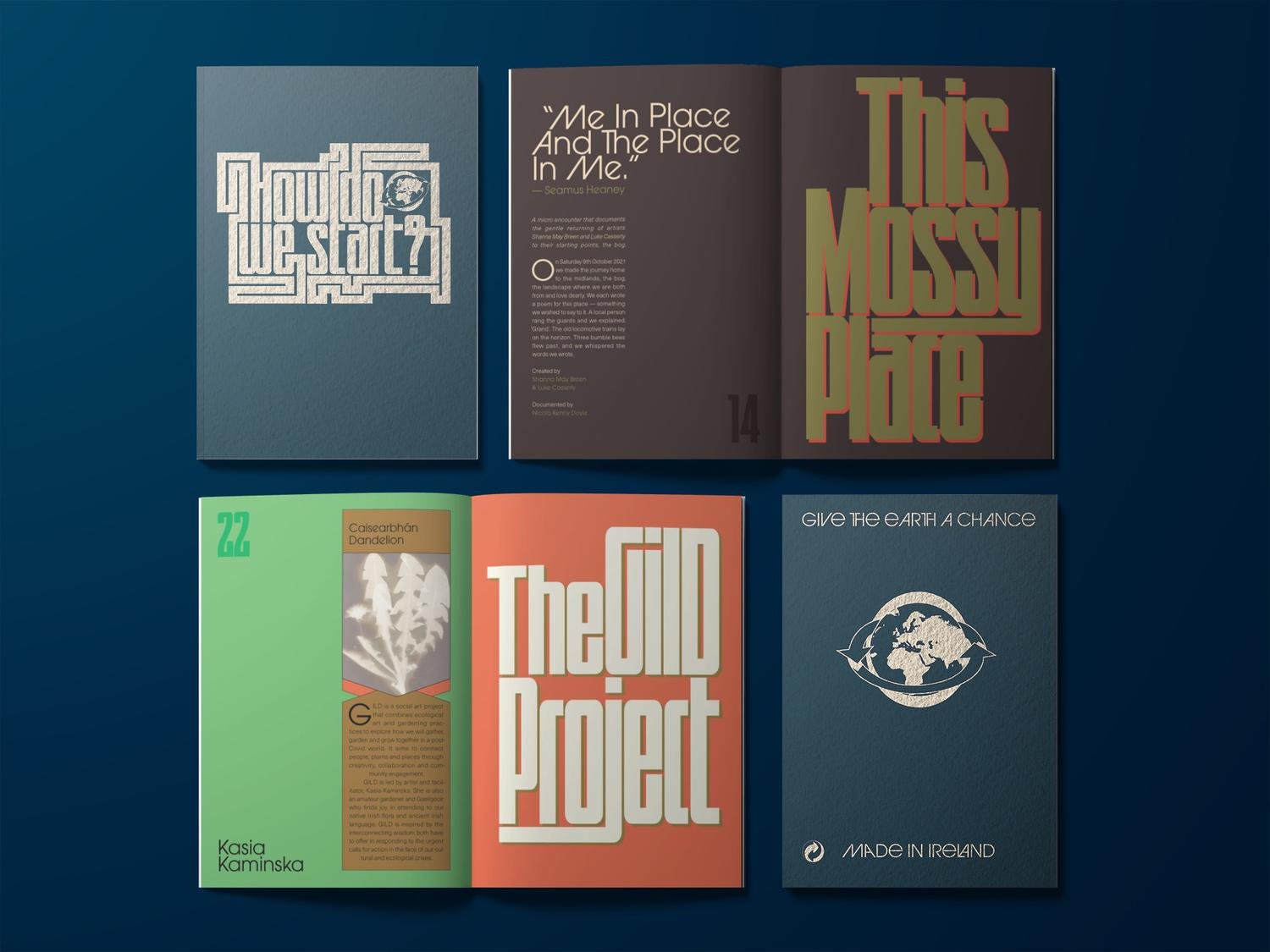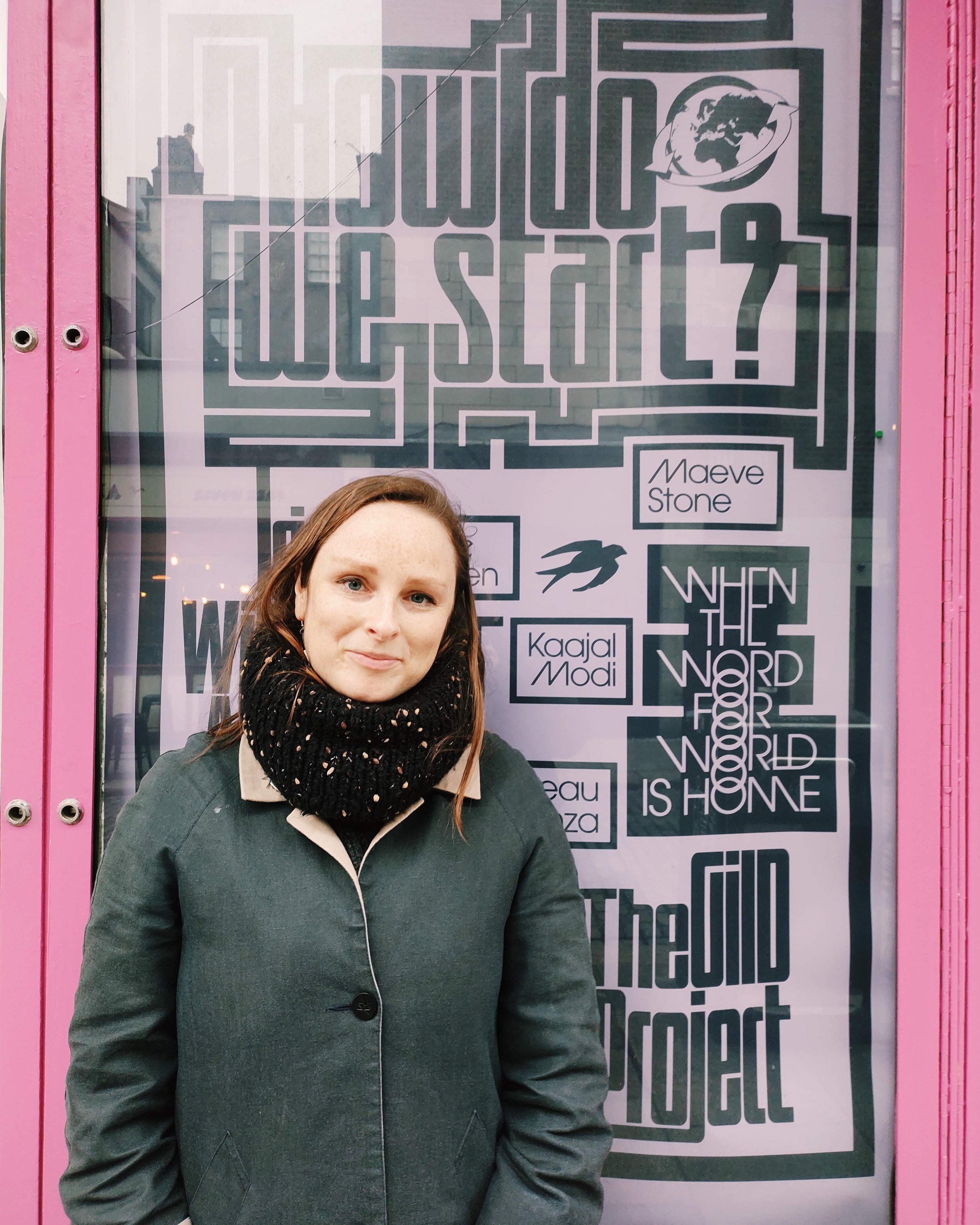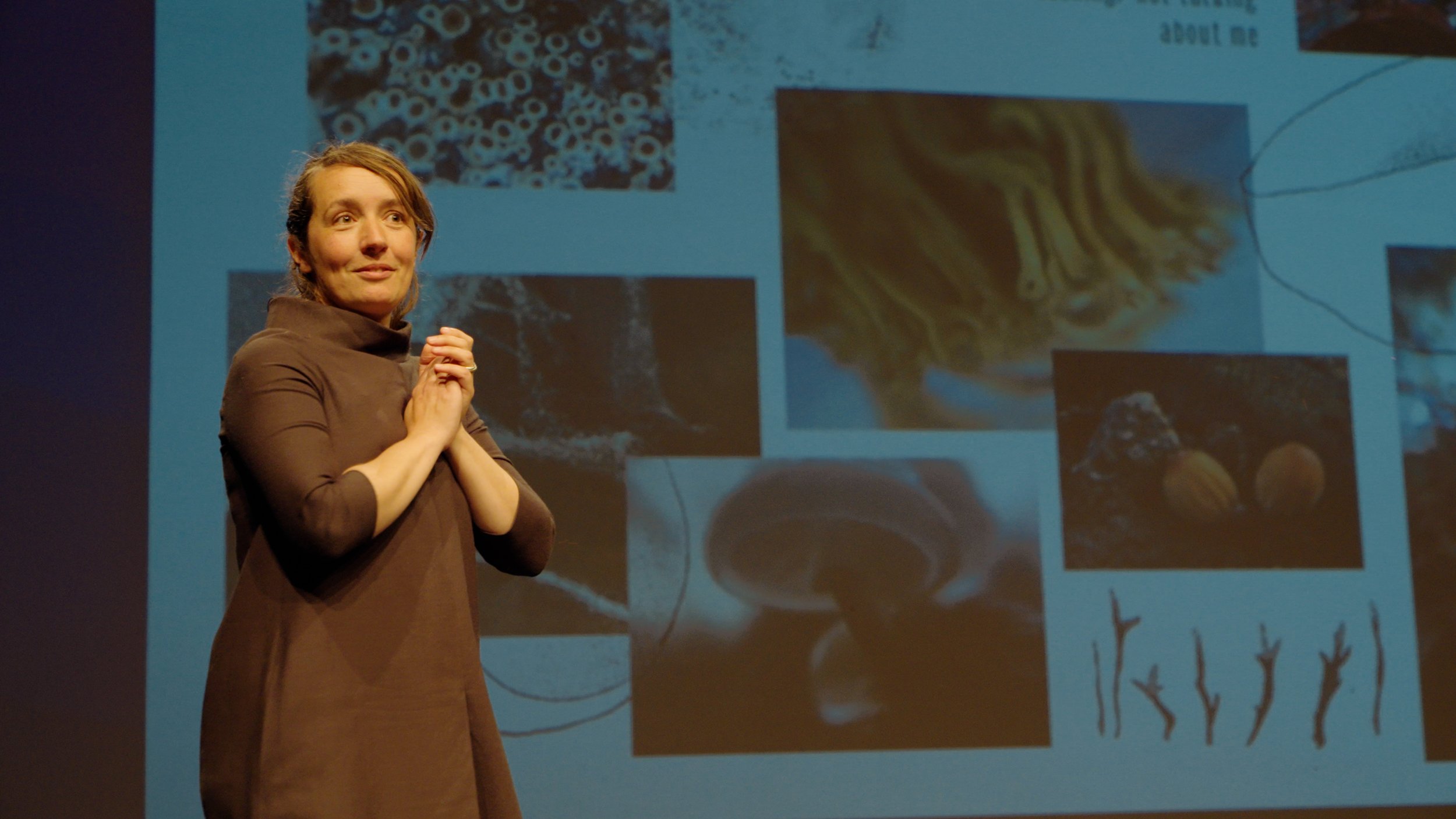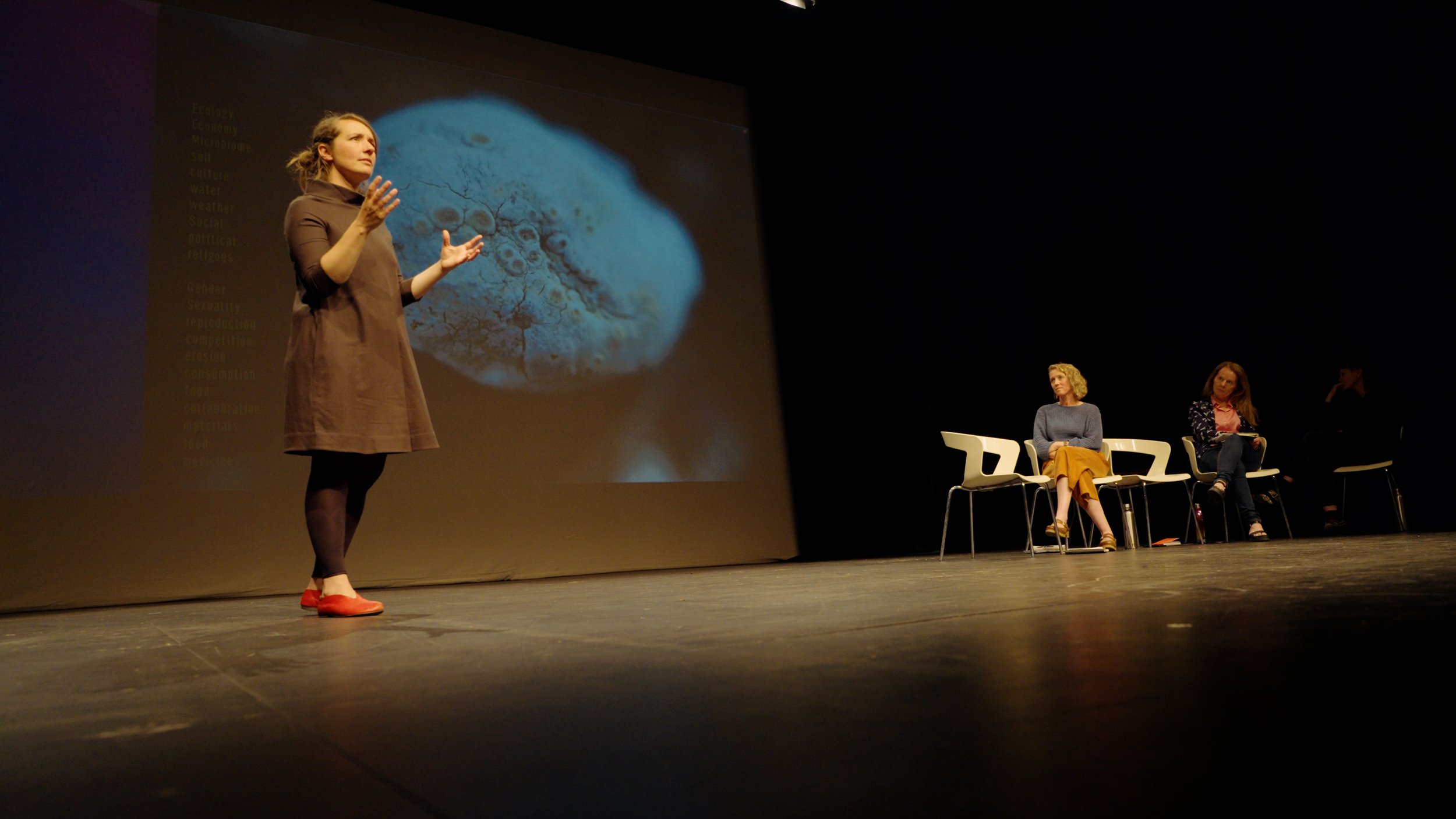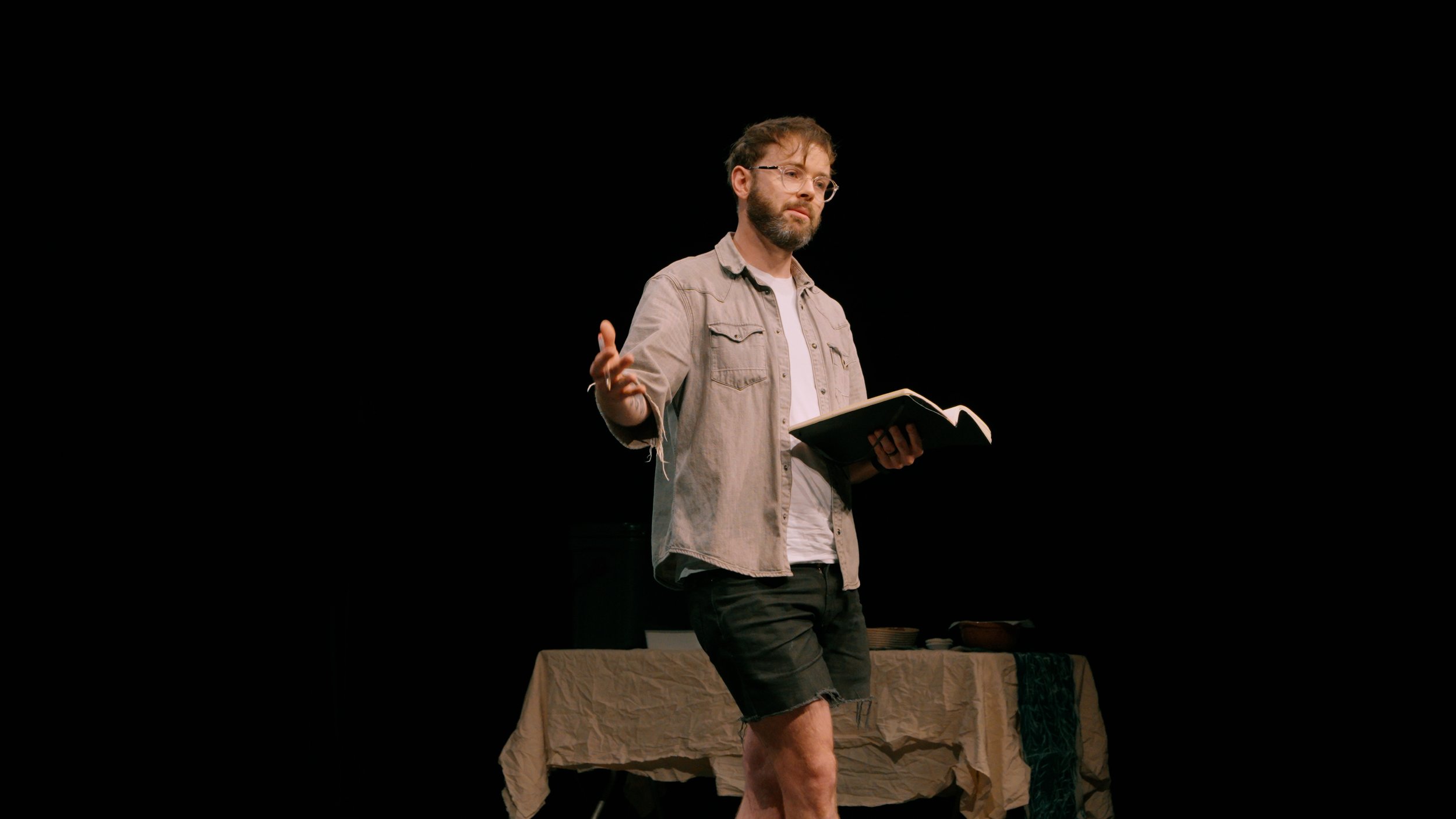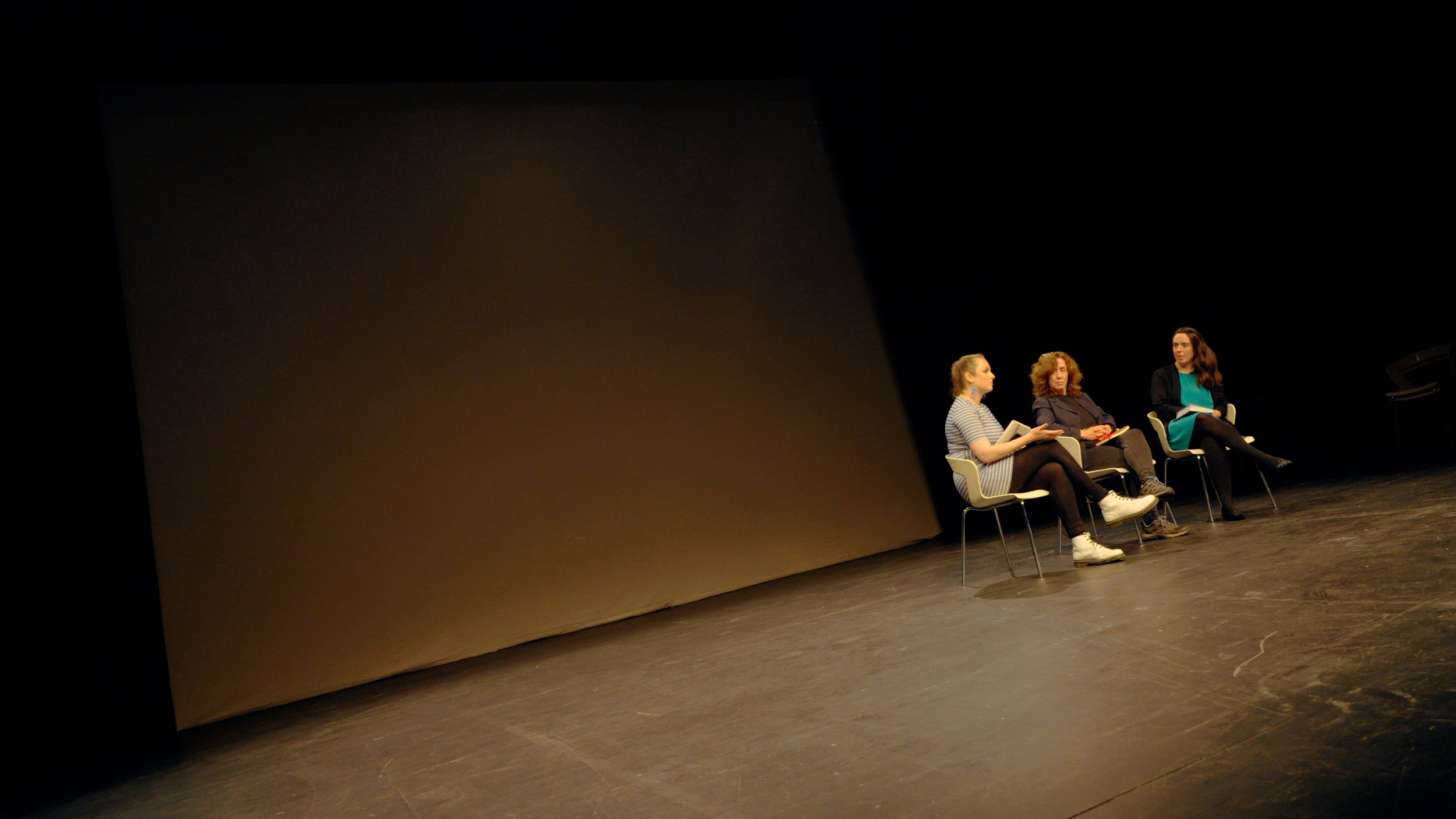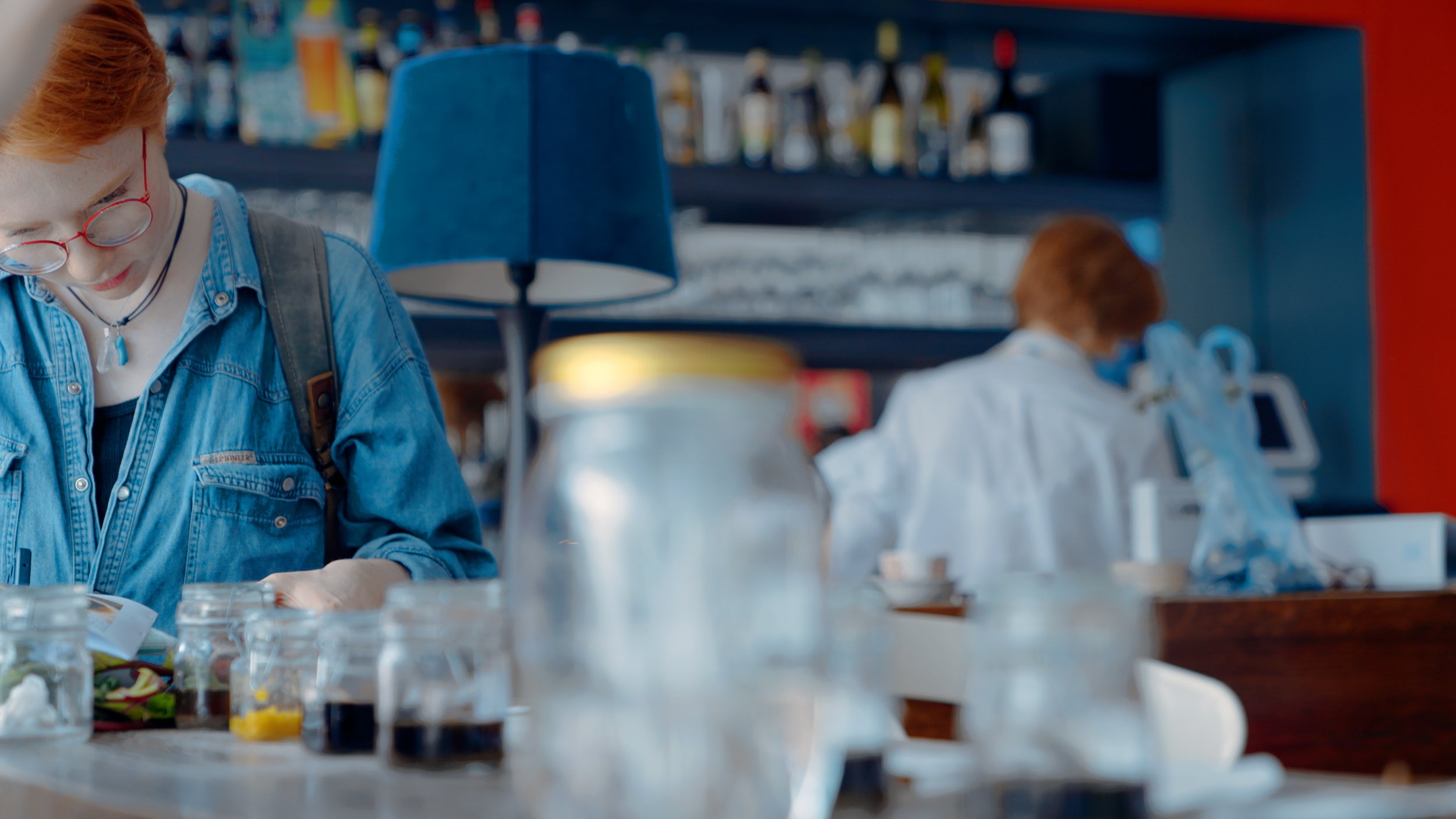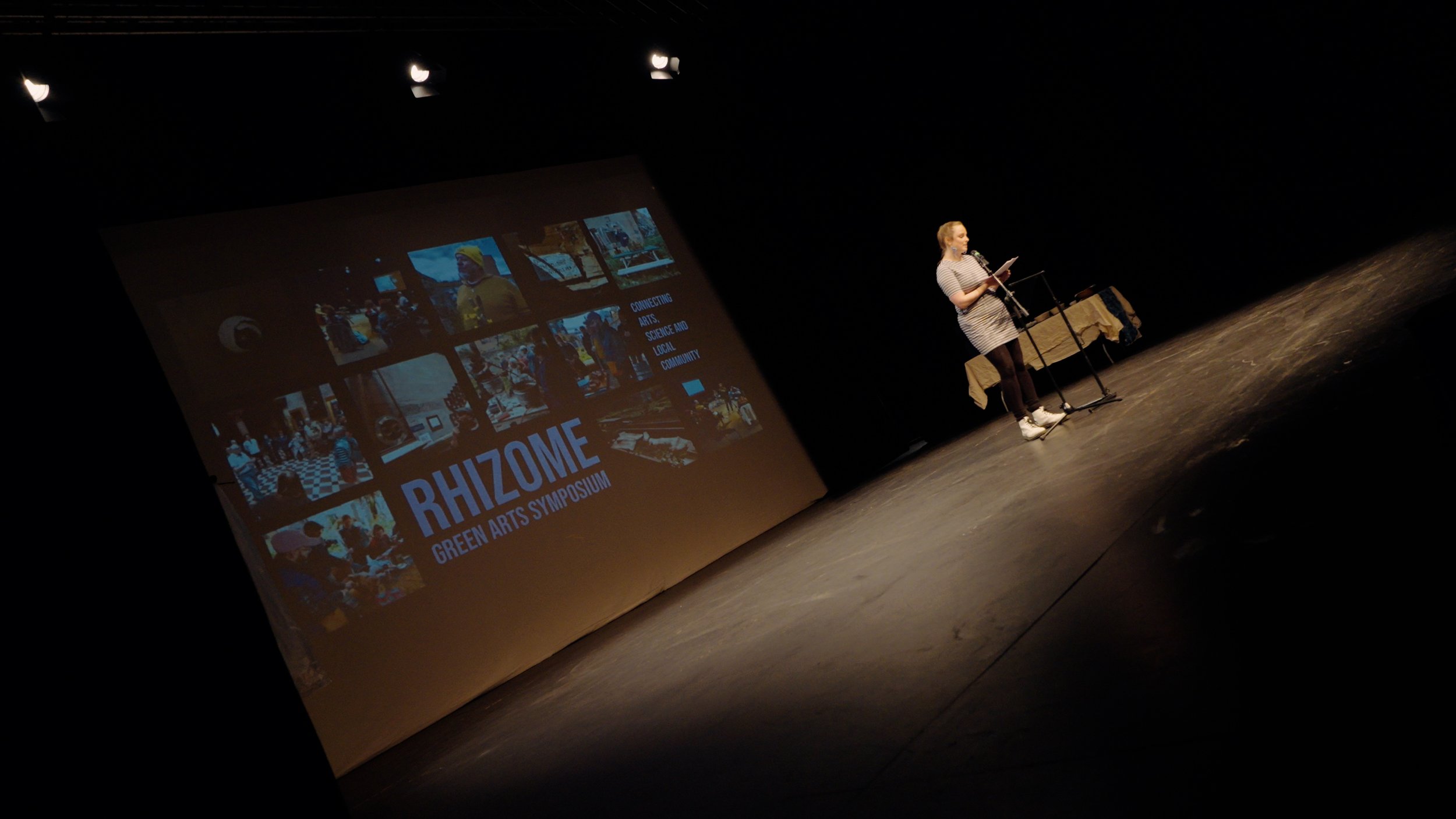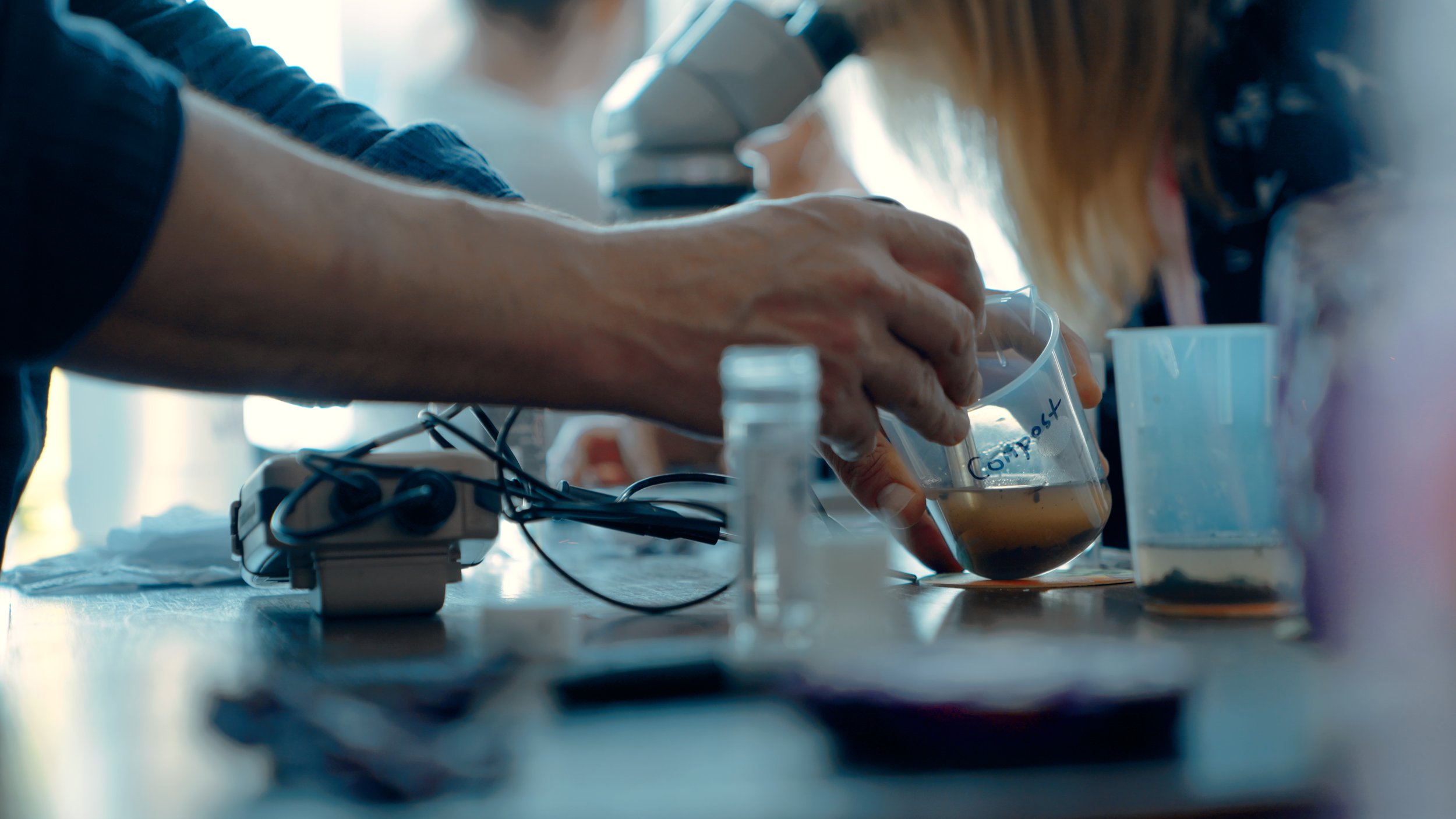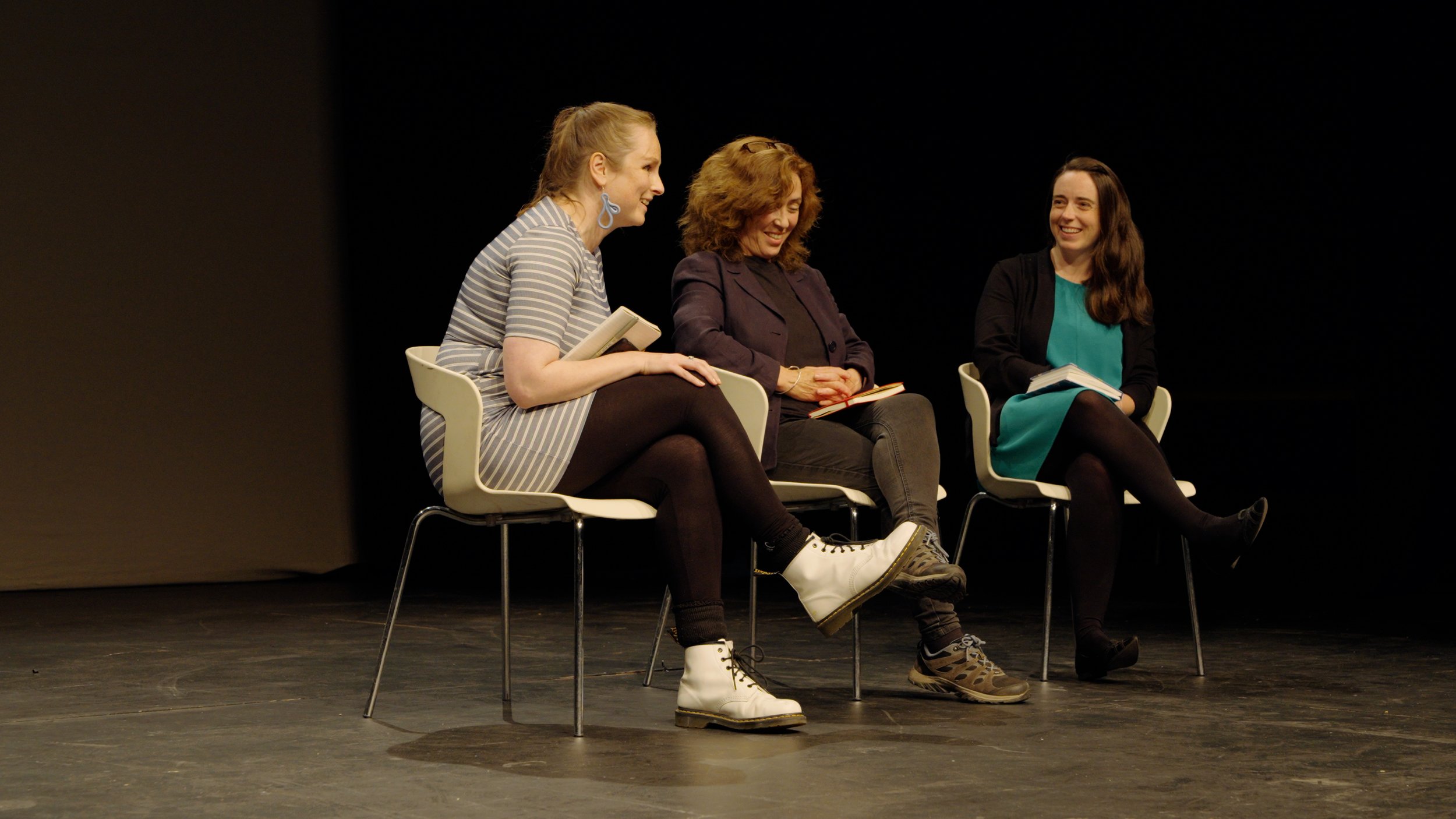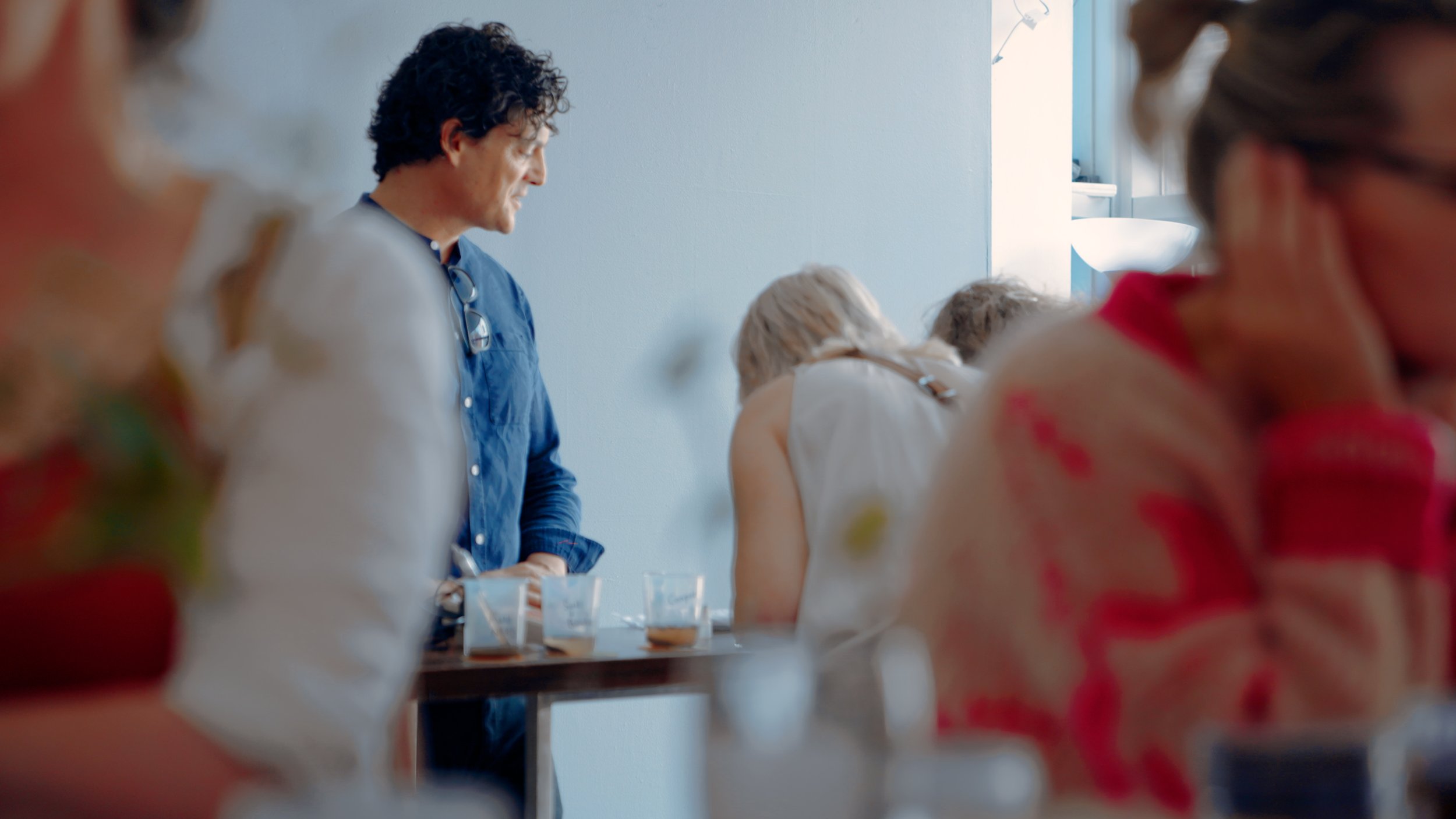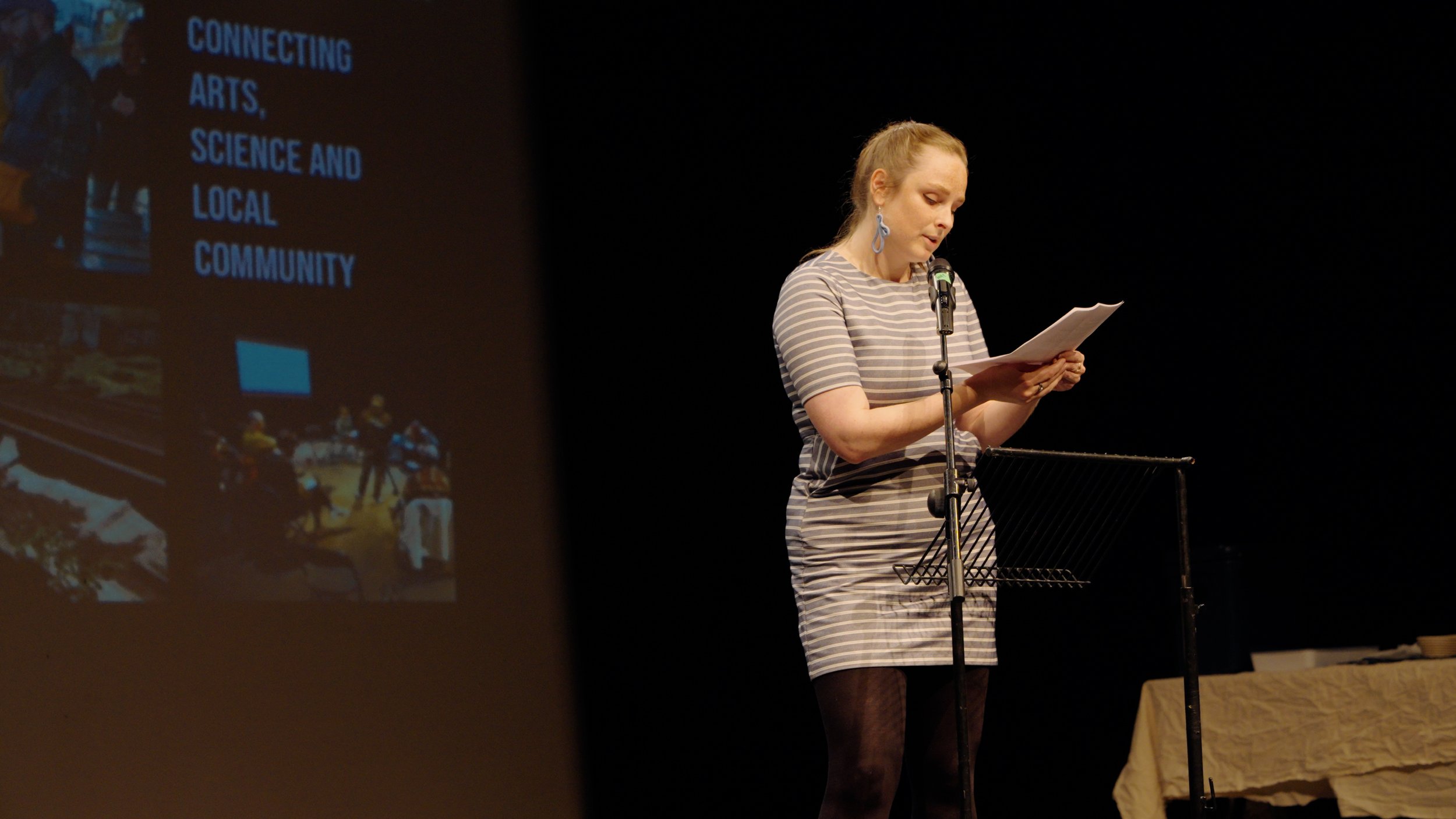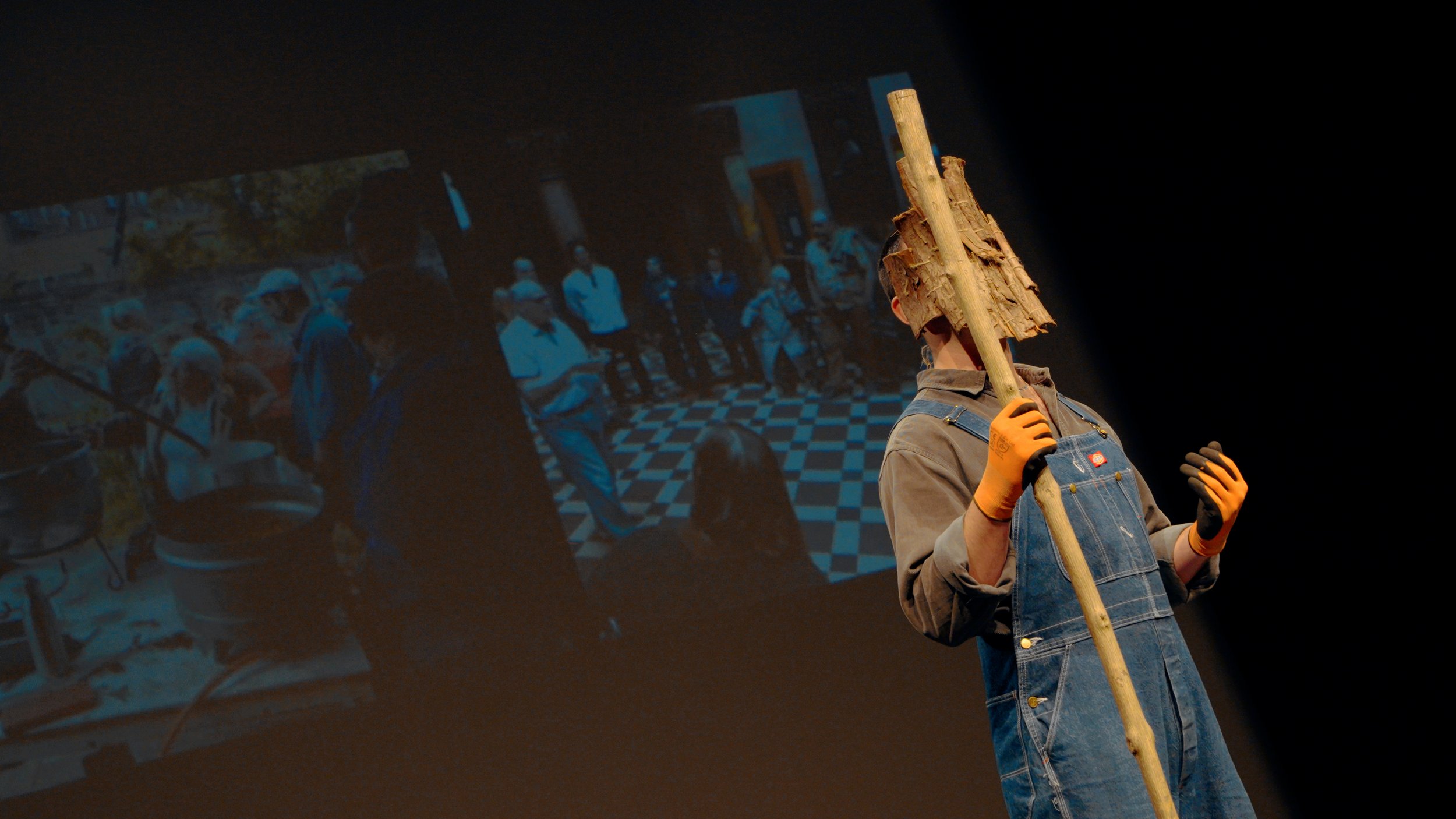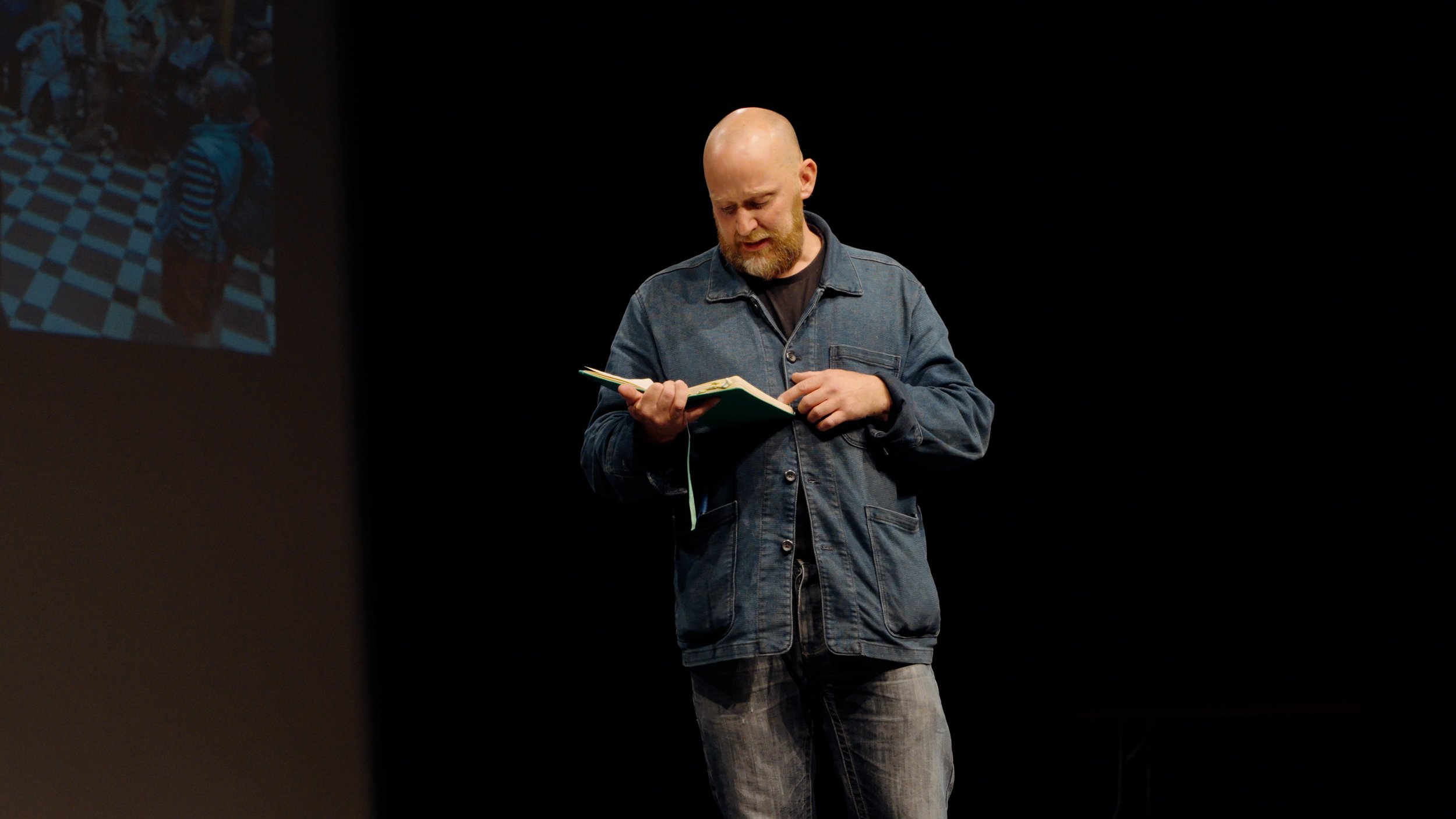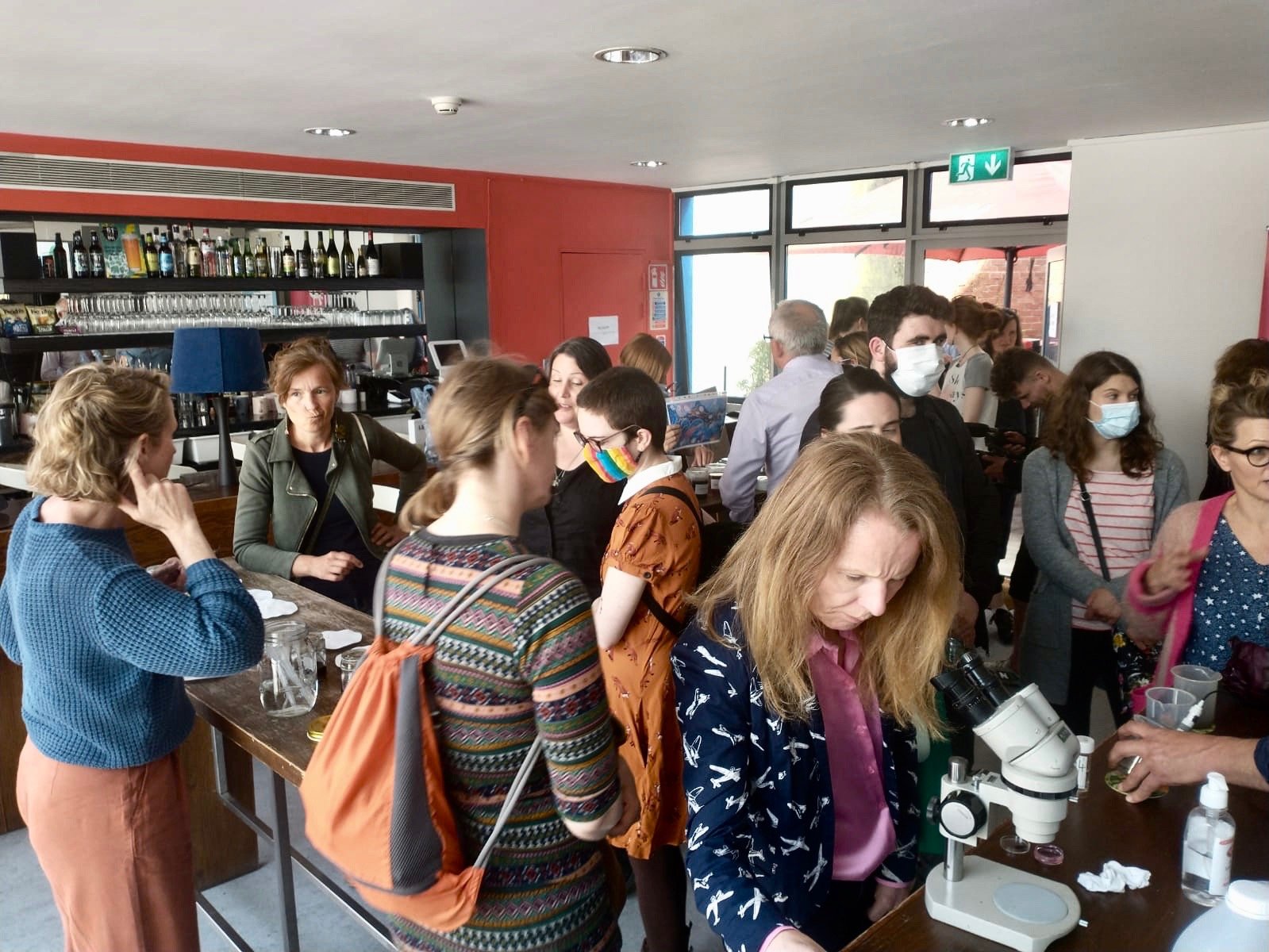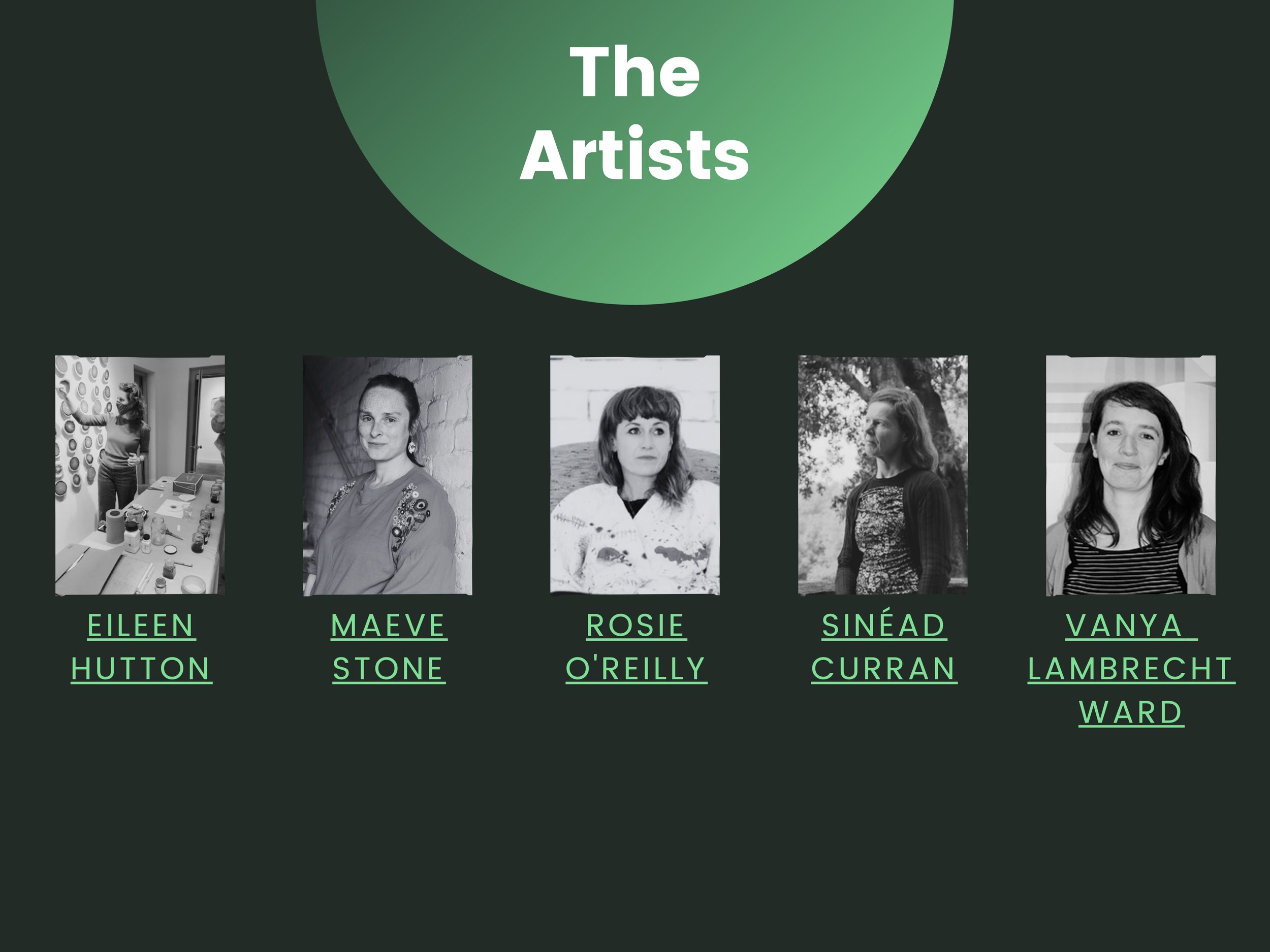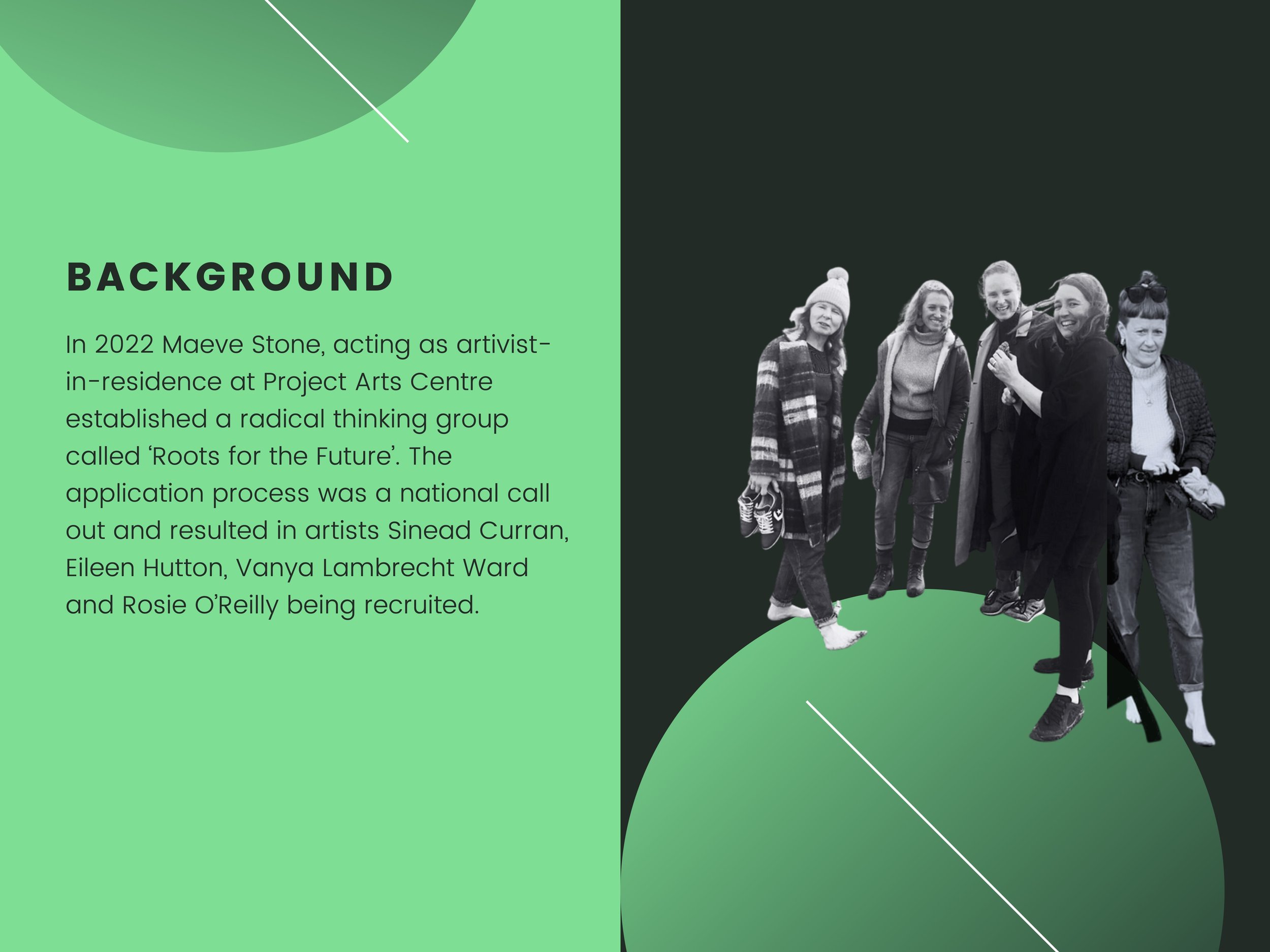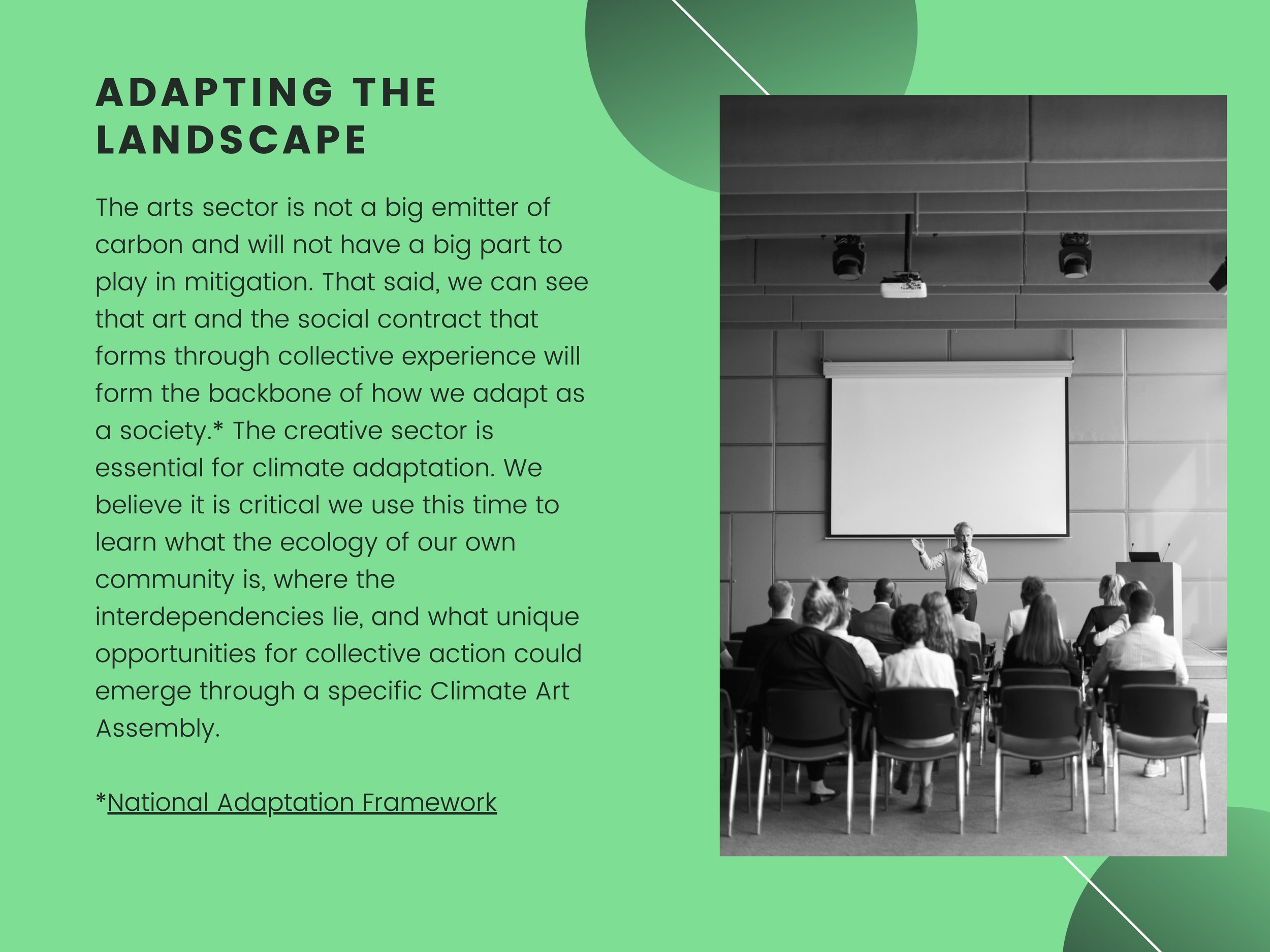Project Art Centre Artivist in Residence
Artivist in Residence
In 2021 I became an Artivist-in-Residence at Project Arts Centre and undertook three major project over the year that followed: Commissioning and editing a publication called “How Do We Start?”, Co-Producing and mentoring on Rhizome; an embedded artist project with Louis Haugh, NCAD, TCD and UCD culminating in a conference at Project, and facilitating a radical thinking group called ‘Roots for the Future’ with the intention to co-design a Climate Art Assembly.
HOW DO WE START?
rhizome
Rhizome is a Green Arts programme that aims to highlight the critical role of creativity, optimism, and imagination in the craft of social and environmental change. Initiated by Project Arts Centre in 2021, the project is led by Artivist in Residence Maeve Stone and Artist in the Community Louis Haugh, in partnership with Fatima Groups United, NCAD Field & Trinity College Dublin. At its core, it seeks to connect local communities from different backgrounds and disciplines, in creative conversation about the future of our planet.
RHIZOME SYMPOSIUM KEYNOTE SPEECH
Rhizomes pull us underground, into the soil. They get us excited about what is multiplying invisibly under the surface, promising new growth and nourishment.
Today we will attempt to identify root systems of thinking - the complex web of connections that have evolved over the course of the Rhizome project, we have let those roots feed and nourish the ideas you will encounter over the course of the day, and that have ultimately provided a feast of ideas. There are a few key ideas that have risen to the surface for me, repeating in quiet ways at different points in the process and I’d like to speak a little bit about them.
The first is how important it is to create space for the unknown.
Often when it comes to the climate crisis we get stuck because we don’t know how to respond to these unfamiliar challenges. We don’t know how to behave, and that can be really uncomfortable for us as social creatures. But this uncomfortable place is also where the real potential exists. Leaning into uncertainty, embracing the unknown, that is where new ideas live, and it is where new behaviour emerges. Donna Haraway suggests that “Our task is to make trouble, to stir up potent responses to devastating events, as well as to settle troubled waters and rebuild quiet places.” Stepping through the magic door on Thomas street feels like a portal into a quiet place that has been rebuilt. The NCAD Field is one of these rich troubled places, with precarity written into its boundaries. Lecturers Gareth Kennedy and Dr. Tom O’Dea fully embrace the potential of uncertainty and the value it holds for students. In the work you will see today there are a variety of ideas on offer that began in the Field. I have been drawn in by wild garlic pesto and Irish sourdough, by conversations around a wood fire, talk of sean teangacha, of Buddleias, of pear jam and non-EU potatoes. It’s an exciting place because it feeds you a lunch of complex possibility as soon as you enter.
Which leads me into the second key idea. Complexity.
Every living system is complex. Beautifully complex. Perfectly complex. Weaving, exchanging and connecting with effortless efficiency. And here we can recognise that complexity has long been a fuel for creative thinking, offering ambiguity, speculation and possibility in these layers. Nature builds in the possibility of transformation and evolution through the act of creativity, sometimes even in the form of creative mistakes. So in this wild moment where we recognise that all of our current systems will cease to function effectively in the Climate Emergency, we are in the process of transformation. I take comfort in the idea that participation is everything, and even our mistakes may be fruitful. The only thing that won’t serve us is to avoid the discomfort of the changing space. Spending time in the company and conversation of Dr. Quentin Crowley has offered us all a deeper understanding of the idea of complexity, of interconnected systems and of deep time. In these conversations I began to see a form of radical empathy that extends our hearts and imaginations forward into the future. As Robert Macfarlane puts it in ‘Underland’
“To think in deep time can be a means not of escaping our troubled present, but rather of re-imagining it; countermanding its quick greeds and furies with older, slower stories of making and unmaking. At its best, a deep time awareness might help us see ourselves as part of a web of gift, inheritance and legacy stretching over millions of years past and millions to come, bringing us to consider what we are leaving behind for the epochs and beings that will follow us.”
I will come back to this idea a little bit later but for now I will move to one of the headline ideas. Soil has been another connecting theme from the first day of this project, and it’s a good site for understanding the idea of Rhizomatic thinking. Soil is a biological structure, and when we look closely it transforms from an unknown dark matter, into a complex living thing. It is a composite of millions of interdependent microorganisms. They exchange sugars and water, they trade and thrive. In any healthy sod of soil you will find a whole community where individual needs are mutually supported. The soil that surrounds the root system of a plant is called the Rhizosphere and it is here where the relationships between species are managed. Our Rhizome has allowed for a similar supported exchange. The diversity of people and ideas involved has made for a rich and fertile ground, encouraging growth and exploration. We owe this richness to Richie Keane as a guide for the Fatima Group on an unfamiliar journey. They are the seeds, planted and sprouting from the moment they found the soil.
Is it any wonder, then, that the work of artist Louis Haugh over the course of the project has focused on food? Emerging from the rhizosphere came conversations about cultural culinary exchange, the history and story of bread, intergenerational exchange, the future of our food, plant based diets, the precarity of our global food systems and the ways we can find each other over a table. As George Monbiot put it we are tasked with discovering how we might “feed the world without devouring the planet”. Somehow it seems like the answer might lie in re-attuning our senses. Can we see and hear more deeply what the earth is asking from us? And how gentle a way to begin that sensory shift than by offering us all a taster Feast. Last Wednesday Louis and the Fatima Group hosted the Rhizome community with a meal of Future Foods that told as many stories through its thoughtful making, as the people who cooked it. There is a collective energy that nourishes people beyond the body. I’m sure all of us can relate to it. We find it sitting around tables with people we respect and care about. In many ways, I believe all life is this transfer of energy.
Which is how I will introduce the final theme on offer today. Energy.
Dr. Sarah McCormack was another key ingredient in the offshoots you will find in this project. Her thinking on solar innovation and how it interacts with art, as well as nature, led to conversations as varied as how we might power elements of this symposium, what energy the field uses, to solar powered internet, localising our technology so that it responds to the availability of solar energy and building energy security for art spaces into the future. This node of the Rhizome will be one that reappears in increasingly urgent conversations as the fuel crisis begins to impact on the capacity of places like Project to deliver programmes that require large amounts of energy. I feel lucky to have been able to listen to Sarah and learn where hope and possibility lie when it comes to decarbonisation. As Mary Robinson said recently we should never waste a crisis so perhaps this, too, is an uncomfortable and troubled space we must stay in and hunt for possibility. I can’t finish this list without mentioning the woman who first thought to plant the rhizome. As Gareth put it last week it was the gentle hand of Cathy Coughlan tilling the soil with generosity and care that made this process a fertile one. A quie architect whose signature, I believe, is in how easily we have all met each other and how frequently we have found opportunity for exchange and transformation.
Working as artivist in residence here has given me the opportunity to collaborate with incredible people and I am in no doubt that each of these Rhizomatic themes and ideas will continue to grow in the next project which you will hear more about later today. You will meet four exceptional artists Rosie O’Reilly, Eileen Hutton, Vanya Lambrecht Ward and Sinead Curren who form a radical thinking group called Roots for the Future. We are engaged in co-designing a process that seeks to draw together a quorum of artists, arts workers and arts organisations in a complex conversation about the climate crisis.
So what is on offer here? Just by showing up today you have accepted an invitation to be active in a transformation process. Change is often uncomfortable and challenging, but it is also inherently hopeful. And hope - as we know - is incredibly powerful. Together we face the challenge and we begin to imagine. We hope for systems that will be more resilient, founded on equality, and accessibility. We hope for new values that protect our place in Nature. We imagine new communities built upon a core understanding of the rights of Nature.
If you will indulge me I’d like to do a little thought experiment. In indigenous tradition there is an idea that you should always leave enough for the seventh generation when it comes to foraging or food cultivation. You don’t use more than you need and you think about what your part is in guaranteeing an abundance for future generations. So, if I can ask you all to close your eyes.
Picture a hospital somewhere today. It is a maternity hospital. You look through a glass door and see a newborn baby feeding at its mothers breast. Give that baby a name. Imagine their fifth birthday and a fight over who gets to eat the sprinkles off the cake topper. Now they're 18. Imagine bad haircuts and joyful dancing. Their quiet words when a beloved friend or parent dies. Now their own family. Another baby is born. What is this baby’s name? What is its first word? Imagine their first time holding someone’s hand, their heart pounding at the touch. Imagine them singing badly in the shower. It’s their 21st birthday and the year is 2073. What goes on the table? Is there still sugar for cake? Is there still beer? Are we leaving that for this ancestor? They decide to have a child too because they are still so in love with life, with each other and nature so how could they not? This child has your name. Funny how things repeat. It grows up and up. What does this ancestor worry about? Is there enough? But now it is clean water instead of sugar. Are we leaving enough for them? And so on to the fifth generation, then the sixth and the seventh. They are waiting.
Open up your eyes. Welcome to the feast of ideas we are offering. We hope it will connect you, to yourself, to each other, and to our future ancestors who are already at the table.
Interview with Róise Goan for Rhizome Symposium
Roots for the future
Climate Art Assembly
The Roots For The Future thinking group was established with Rosie O’Reilly, Sinead Curran, Eileen Hutton and Vanya Lambrecht-Ward and was led by Maeve Stone with four intensive meetings over 6 months. At the end of this period the group decided to form a collective and bring the project forward, seeking funding and developing the work further.


